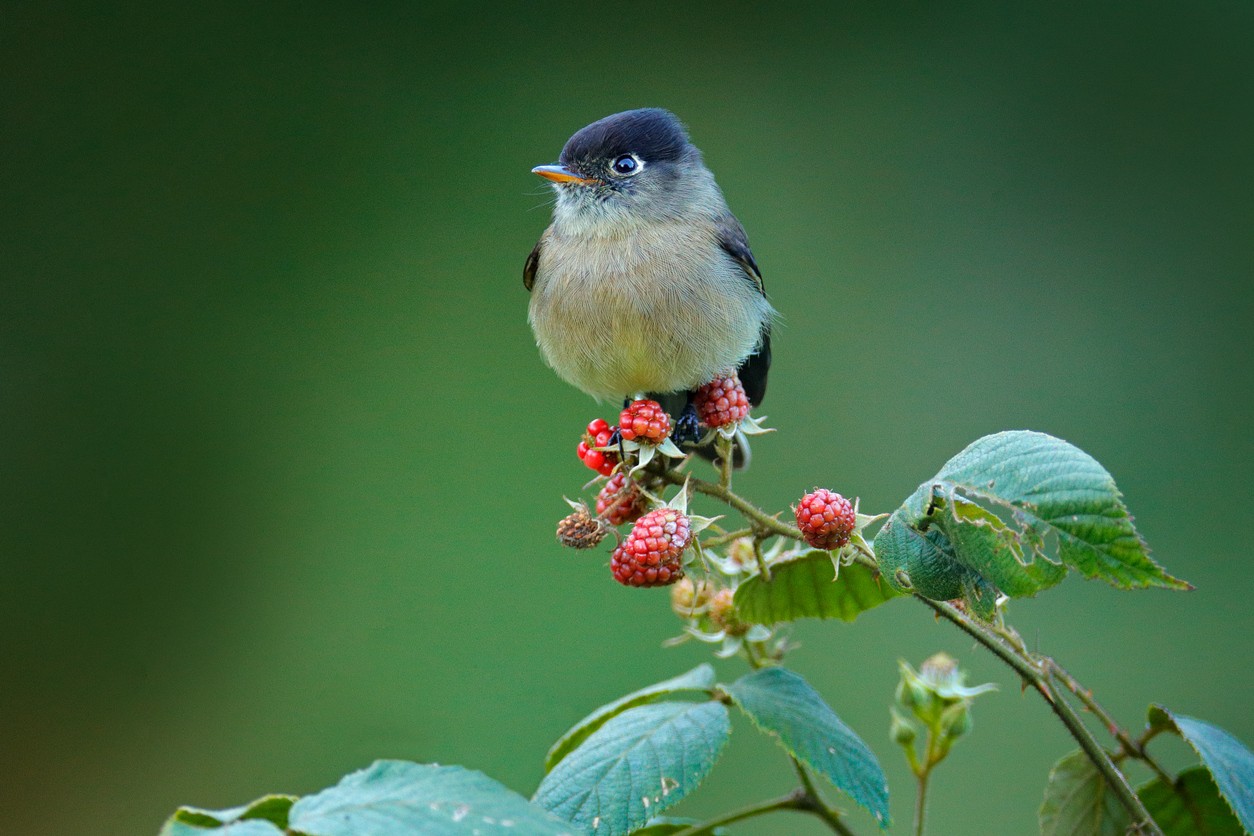Black-capped Flycatcher
A species of Empidonax flycatchers Scientific name : Empidonax atriceps Genus : Empidonax flycatchers
Black-capped Flycatcher, A species of Empidonax flycatchers
Botanical name: Empidonax atriceps
Genus: Empidonax flycatchers
Content
Description General Info

Description
The black-capped flycatcher (Empidonax atriceps) is a very small passerine bird in the tyrant flycatcher family. It is endemic to the highlands of Costa Rica and western Panama. This species is found in the high canopy of mountain oak forest, coming lower at the edges and in clearings, and also in second growth and bushy pastures. It breeds mainly in the highest forested areas, from 2450 m to 3300 (even 4000) m altitude, but will descend to as low as 1850 m in the height of the rainy season. The cup nest is made of grass and mosses and lined with plant fibre; it hangs from grass at the top of an earth bank, or is placed 2–12 m high in a vertical tree fork. The typical clutch is two unmarked cream or white eggs. Incubation by the female is 14–15 days to hatching, with another 17 days to fledging. The black-capped flycatcher is 11.5 cm long and weighs 9 g. Most of its head and the rear of its neck are sooty black, the upperparts are olive-brown and the underparts are paler brown, becoming whitish on the throat and yellower on the lower belly. The head has a broad white eye ring, broken above the eye. The wings and tail are blackish, the former having two pale brown wing bars. The sexes are similar, but young birds have a browner head and paler wing bars. The call is a whistled kip and the song is a loud keer keer. This species is easily distinguished from migratory Empidonax flycatchers by its blackish head and generally dark appearance. Black-capped flycatchers are tame, active birds, usually seen alone when not breeding. They eat insects, often taken in flight in short sallies from an open perch. 
Size
11 cm
Nest Placement
Tree
Feeding Habits
Black-capped Flycatcher predominantly consumes insects, such as dipterans, coleopterans, and lepidopterans. They exhibit adept aerial foraging techniques, snatching prey mid-flight, and favor feeding in the early morning and evening. Unique adaptations include acute vision and maneuverability for precision hunting of flying insects.
Habitat
The black-capped Flycatcher is typically found in montane oak (Quercus) forests, which include forest borders and clearings. Its habitat also extends to brushy second growths, pastures, and the fringes of páramo environments. It predominantly resides at elevations between 2450 to 3300 meters, but can locally descend to 2100 meters and even to 1850 meters during the peak of the rainy season. Geographically, this species is associated with higher altitude regions across broad montane landscapes.
Dite type
Insectivorous
General Info
Feeding Habits
Bird food type


Scientific Classification
Phylum
Chordates Class
Birds Order
Perching birds Family
Tyrant flycatchers Genus
Empidonax flycatchers Species
Black-capped Flycatcher